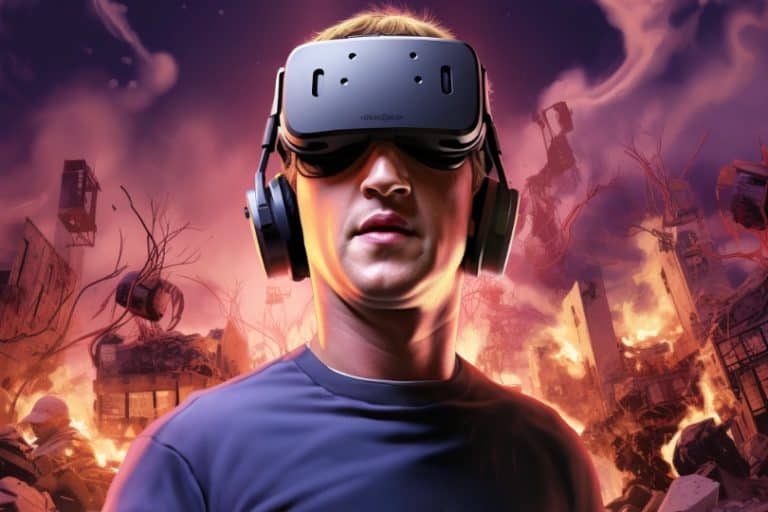The Metaverse Disaster: Lessons Learned and Future Implications
The Metaverse Disaster: Lessons Learned and Future Implications
The concept of the metaverse, a virtual reality space where users can interact with a computer-generated environment and other users, has been a hot topic in the tech world for several years. Promoted as the next big thing in digital interaction, the metaverse promised to revolutionize how we work, play, and socialize. However, the journey towards this digital utopia has been fraught with challenges and setbacks. In this blog, we will explore the factors that contributed to the so-called “metaverse disaster,” the lessons learned, and the future implications for technology and society.
The Hype and the Reality
The Vision
The metaverse was envisioned as a fully immersive digital world where people could live parallel lives. Companies like Meta (formerly Facebook), Microsoft, and others invested billions of dollars into developing this technology. The idea was to create a seamless blend of virtual and augmented reality, offering experiences that were previously unimaginable.
The Investment
Meta, under the leadership of Mark Zuckerberg, rebranded itself to emphasize its commitment to the metaverse. The company invested over $15 billion into metaverse projects, hiring thousands of employees and acquiring numerous startups. Other tech giants like Microsoft also jumped on the bandwagon, seeing the metaverse as the next frontier in digital innovation.
The Challenges
Technical Limitations
One of the primary challenges faced by the metaverse was the technical limitations of current technology. Creating a fully immersive virtual world requires significant advancements in hardware and software. Issues such as latency, bandwidth, and the need for high-performance computing power posed significant hurdles.
User Adoption
Despite the hype, user adoption of metaverse platforms has been slower than anticipated. Many users found the technology cumbersome and the experiences underwhelming. The need for expensive VR headsets and other hardware also limited accessibility.
Content Creation
Creating engaging and immersive content for the metaverse proved to be a daunting task. Unlike traditional media, metaverse content requires a high level of interactivity and realism. This necessitates a significant investment in time, money, and expertise, which many companies were not prepared for.
Privacy and Security
The metaverse raised significant concerns about privacy and security. The collection of vast amounts of personal data, combined with the potential for virtual harassment and other malicious activities, created a complex landscape for regulators and companies to navigate.
The Fallout
Financial Losses
The financial fallout from the metaverse disaster has been substantial. Meta, for example, faced significant financial losses, leading to the layoff of thousands of employees and the abandonment of several projects. Microsoft also shut down its metaverse division after firing 10,000 employees.
Reputational Damage
The failure of the metaverse to live up to its promises has also caused reputational damage to the companies involved. The rebranding of Facebook to Meta, in particular, has been criticized as a misguided attempt to pivot away from the company’s existing challenges.
Industry Impact
The broader tech industry has also felt the impact of the metaverse disaster. Investors have become more cautious about funding ambitious tech projects, and there is a growing skepticism about the feasibility of large-scale virtual worlds.
Lessons Learned
Realistic Expectations
One of the key lessons from the metaverse disaster is the importance of setting realistic expectations. While the vision of a fully immersive digital world is compelling, the technology and infrastructure needed to support it are still in their infancy. Companies need to be transparent about the limitations and challenges involved.
Incremental Progress
Rather than aiming for a fully realized metaverse, companies should focus on incremental progress. This means developing and refining individual components, such as VR hardware, software, and content, before attempting to integrate them into a cohesive whole.
User-Centric Design
User adoption is critical to the success of any new technology. Companies need to prioritize user-centric design, ensuring that metaverse platforms are accessible, intuitive, and engaging. This involves listening to user feedback and continuously improving the user experience.
Privacy and Security
Addressing privacy and security concerns is essential for building trust in metaverse platforms. Companies need to implement robust data protection measures and create safe environments for users. This includes developing clear policies and guidelines for behavior in virtual spaces.
The Future of the Metaverse
Continued Investment
Despite the setbacks, investment in metaverse technology is likely to continue. The potential benefits of a fully realized metaverse are too significant to ignore. However, future investments will likely be more measured and focused on addressing the challenges identified.
Collaboration and Standards
The development of the metaverse will require collaboration across the tech industry. Establishing common standards and protocols will be essential for creating interoperable and scalable virtual worlds. This will involve cooperation between companies, regulators, and other stakeholders.
New Applications
While the vision of a fully immersive metaverse may still be a long way off, there are numerous applications of metaverse technology that can be realized in the near term. These include virtual meetings, remote work, online education, and virtual tourism. By focusing on these practical applications, companies can demonstrate the value of metaverse technology and build momentum for future developments.
Ethical Considerations
As the metaverse evolves, it will be important to address the ethical implications of this technology. This includes considering the impact on mental health, social interactions, and the digital divide. Companies and regulators need to work together to ensure that the metaverse is developed in a way that benefits society as a whole.
The metaverse disaster has highlighted the challenges and complexities involved in creating a fully immersive digital world. While the vision of the metaverse remains compelling, it is clear that there is still a long way to go before this vision can be realized. By learning from the mistakes of the past and focusing on incremental progress, user-centric design, and ethical considerations, the tech industry can continue to explore the potential of the metaverse and pave the way for future innovations.

